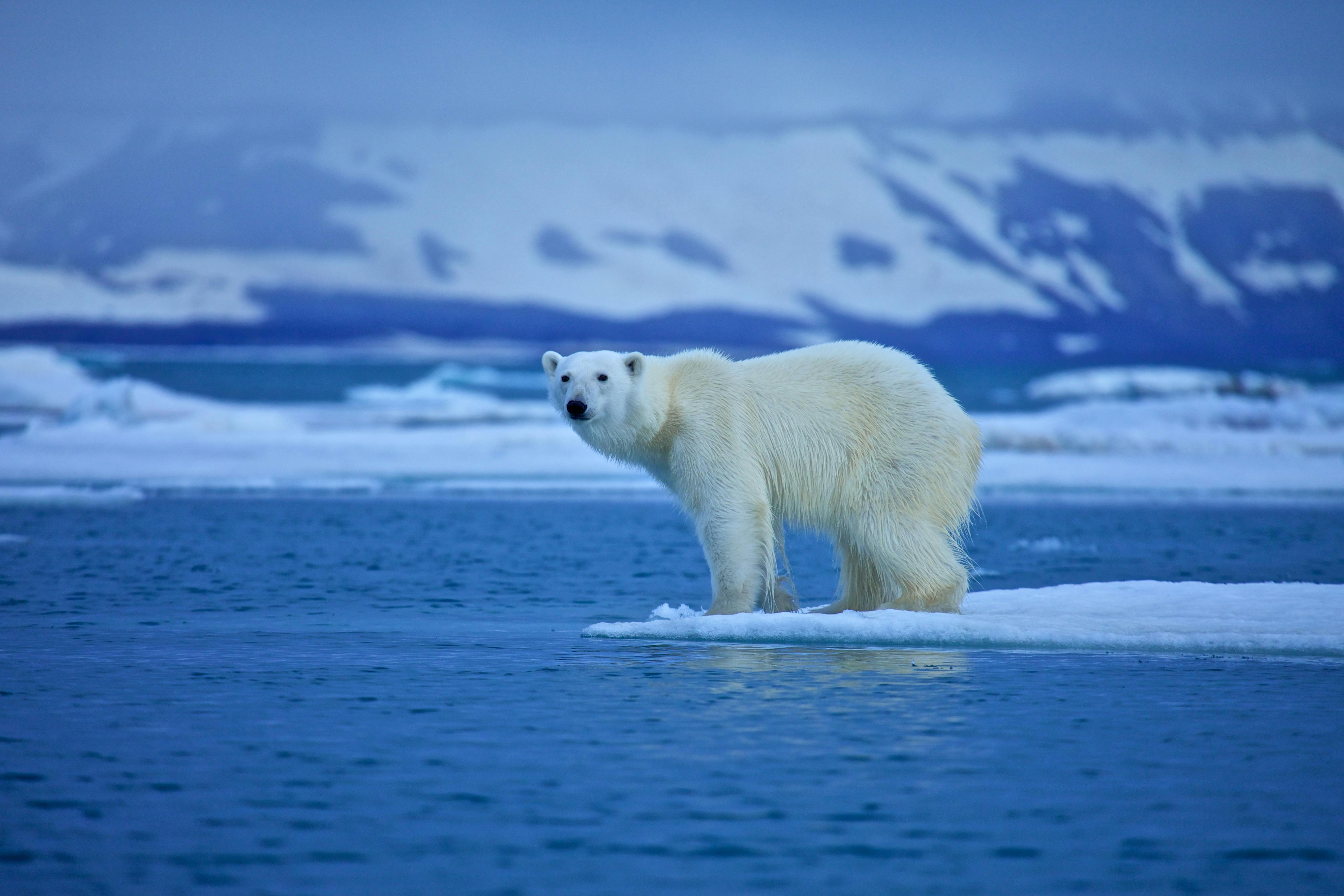
There are few animals so iconic to the North Pole region as the polar bear. Even the name "Arctic" is derived from the Greek word for bear, "arctos". But due to climate change, the polar bear's habitat is literally melting away. That's why Diergaarde Blijdorp is helping to protect polar bears in the wild.
Ursus maritimus

30 years
1.3 - 1.6 meters
♀ 1.8 – 2 meters
♂ 2 – 2.5 meters
♀ 150 - 300 kilograms
♂ 300 - 800 kilograms
Polar bears are large predators fully adapted to living in a cold environment. They have a thick fur of translucent hairs, making them barely noticeable in the snow. Under that fur is a thick layer of fat that retains heat well. With their strong legs, they are excellent swimmers. But they can also run fast with them: they can reach speeds of up to 40 kilometers per hour!
...a newborn polar bear cub only weighs a kilogram?
...a male polar bear on its hind legs can stand up to three meters tall?
The polar bear occurs naturally throughout the Arctic. There they live primarily on the sea ice of the Arctic Ocean, but also on the snowy plains and tundras of Greenland, Canada, Alaska, Russia and northern Norway.

Polar bears primarily hunt seals. To do this, they look for holes in the sea ice, where seals surface to catch their breath. The polar bear remains unmoving near the edge and strikes the moment the seal raises its head above the water. When the sea ice melts in the spring, the polar bears can no longer hunt seals and retreat, out onto land. There, they survive for up to 5 months without meat. Once the sea water freezes again, the polar bears return to the sea to hunt.

Polar bears depend largely on sea ice to hunt and reproduce. Unfortunately, sea ice in the Arctic is decreasing dramatically due to climate change. The ice is melting earlier and earlier in the spring and seawater is also freezing later and later in the fall. As a result, global warming is also accelerating again. This is because ice reflects sunlight, causing more heat to leave the atmosphere. When there is less ice, less sunlight is reflected and the seawater absorbs more heat. As a result, more ice melts again. This way, the polar bear's habitat also becomes smaller and smaller.

Due to melting sea ice, polar bears are coming into contact with humans more often, for example in Greenland. In the past, many polar bears have been shot in self-defense as a result. To protect both the polar bears and the people of Greenland, Diergaarde Blijdorp supports WWF. Together with the Inuit hunters, WWF sets up preventive patrols. These patrols scout the area in the morning and evening and chase the bears away with loud noises, without shooting them. That way the polar bears and Inuit can live together safely.

The polar bear enclosure is decorated like a tundra, with a mix of low vegetation and rocks. The two habitats can be connected. Both habitats have a deep bath with salt water. To give the polar bears some exercise, the keepers feed them by throwing or hiding food in the water. Sometimes, they pack food in crates or smear honey or peanut butter on the rocks as enrichment for the polar bears.

For €2.50 you can contribute to a healthy meal for the polar bear.

For €5 you contribute to a better environment for the polar bear.

For €10 you contribute to education about the polar bear.


